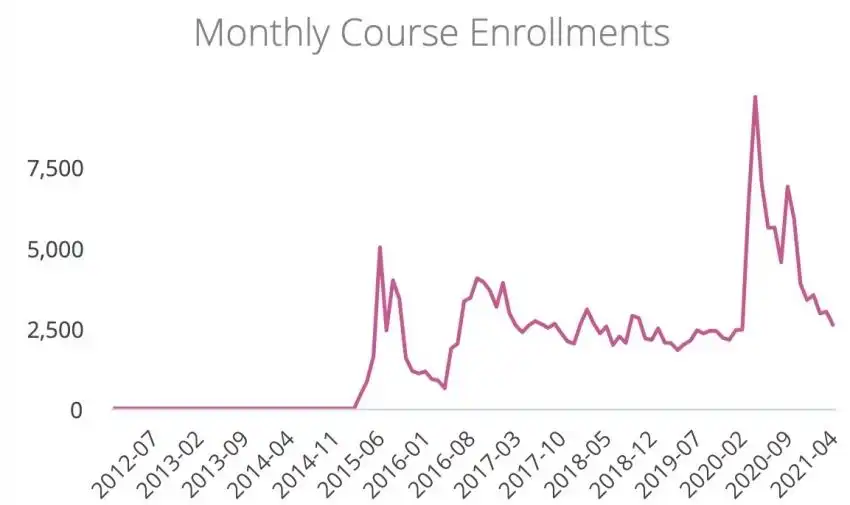Home>MOOCs in 2020 and the impact of the COVID crisis
21.05.2021
MOOCs in 2020 and the impact of the COVID crisis
There was a considerable increase in MOOC audience on the Coursera platform in 2020. The annual number of registered participants for all 10 Sciences Po MOOCs available in various languages rose by 37% in 2020, compared to 17% in 2019. Since their creation and up to the end of 2020, the number of registered participants in all Sciences Po MOOCs streamed on all platforms was 259,869.
This spectacular increase can be explained primarily as an effect of the lockdowns imposed in numerous countries around the world starting in March 2020. In general, all MOOC platforms experienced a rise in the number of registered users due to university closures. Coursera, a platform that had more than 76 million registered users in 2021, saw an increase of 31 million users just in 2020 (as opposed to 8 million new users in 2019).
The second factor that explains the increase in the number of Coursera users is the new program the platform set up in March 2020, “Coursera for Campus.” This program gave universities all over the world free access to almost all of the platform’s course catalogue, thus ensuring pedagogical continuity.
All of our MOOCs streamed on the platform benefited from this increase. Consequently, and taking into account the various language versions of our most popular courses, our statistics show significant growth in the number of registered users in 2020. Sciences Po’s five main MOOCs reaped the benefits of this dynamic: Géopolitique de l’Europe (+26.8%), Politics and Economics of International Energy (+28.4%), Cities are Back in Town (+25%), Espace Mondial (+16.8%), Migrations Internationales (+36.7%). This increase is even more pronounced for the MOOCs that usually have less visibility on the platform, with an audience growth between 38% and 53.5%.
Despite the context, the learner typology has not really changed. Sciences Po’s MOOCs draw a primarily young audience (25-34 years old), of which the majority are not students (54%) and generally have a job (64%). Among the 33% of registered users who are students, Sciences Po’s courses mainly attract master’s students (42%), while the typical Coursera user profile is usually undergraduate students.
